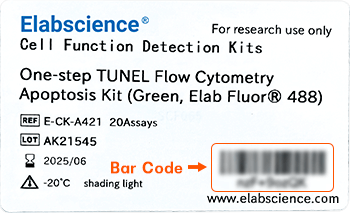Serpina1 Polyclonal Antibody (D-AB-10209L)

For research use only.
| Verified Samples |
Verified Samples in WB: Human Hep G2, Mouse Kidney, Mouse Liver, Rat Kidney, Rat Liver |
| Dilution | WB 1:500-1000 |
| Isotype | IgG |
| Host | Rabbit |
| Reactivity | Human, Mouse, Rat |
| Applications | WB |
| Clonality | Polyclonal |
| Immunogen | Recombinant Rat Serpina1 protein expressed by E.coli |
| Abbre | Serpina1 |
| Synonyms | A1A, A1AT, AAT, Alpha 1 antiproteinase, Alpha 1 antitrypsin, Alpha 1 antitrypsin null, Alpha 1 protease inhibitor, Alpha-1 protease inhibitor, Alpha-1-antiproteinase, Alpha1AT, Dom1, PI, PI1, PRO2275, Serine (or cysteine) proteinase inh, alpha1 proteinase inhibitor |
| Swissprot | |
| Calculated MW | 46 kDa |
| Observed MW |
43 kDa,50kDa
The actual band is not consistent with the expectation.
Western blotting is a method for detecting a certain protein in a complex sample based on the specific binding of antigen and antibody. Different proteins can be divided into bands based on different mobility rates. The mobility is affected by many factors, which may cause the observed band size to be inconsistent with the expected size. The common factors include: 1. Post-translational modifications: For example, modifications such as glycosylation, phosphorylation, methylation, and acetylation will increase the molecular weight of the protein. 2. Splicing variants: Different expression patterns of various mRNA splicing bodies may produce proteins of different sizes. 3. Post-translational cleavage: Many proteins are first synthesized into precursor proteins and then cleaved to form active forms, such as COL1A1. 4. Relative charge: the composition of amino acids (the proportion of charged amino acids and uncharged amino acids). 5. Formation of multimers: For example, in protein dimer, strong interactions between proteins can cause the bands to be larger. However, the use of reducing conditions can usually avoid the formation of multimers. If a protein in a sample has different modified forms at the same time, multiple bands may be detected on the membrane. |
| Concentration | 1 mg/mL |
| Buffer | PBS with 0.05% Proclin300, 1% protective protein and 50% glycerol, pH7.4 |
| Purification Method | Antigen Affinity Purification |
| Research Areas | Cancer, Cardiovascular, Metabolism |
| Conjugation | Unconjugated |
| Storage | Store at -20°C Valid for 12 months. Avoid freeze / thaw cycles. |
| Shipping | The product is shipped with ice pack,upon receipt,store it immediately at the temperature recommended. |
| background | SERPINA1 is the gene for a protein called alpha-1-antitrypsin (AAT),which is a serine protease inhibitor whose targets include elastase,plasmin,thrombin,trypsin,chymotrypsin,and plasminogen activator. AAT is a glycoprotein synthesized primarily by hepatocytes,with smaller amountssynthesized by intestinal epithelial cells,neutrophils,pulmonary alveolar cells and macrophages. AAT is the most abundant,endogenous serine protease inhibitor in blood circulation and it has been implicated in regulating vital fluid phase biological events such as blood coagulation,fibrinolysis,complement activation,apoptosis,reproduction,tumor progression and inflammatory response. The primary function of AAT is thought to be the inactivation of neutrophil elastase and other endogenous serine proteases. Defects in SERPINA1 can cause emphysema or liver disease. |
Other Clones
{{antibodyDetailsPage.numTotal}} Results
-
{{item.title}}
Citations ({{item.publications_count}}) Manual MSDS
Cat.No.:{{item.cat}}
{{index}} {{goods_show_value}}
Other Formats
{{formatDetailsPage.numTotal}} Results
Unconjugated
-
{{item.title}}
Citations ({{item.publications_count}}) Manual MSDS
Cat.No.:{{item.cat}}
{{index}} {{goods_show_value}}
-
IF:{{item.impact}}
Journal:{{item.journal}} ({{item.year}})
DOI:{{item.doi}}Reactivity:{{item.species}}
Sample Type:{{item.organization}}
-
Q{{(FAQpage.currentPage - 1)*pageSize+index+1}}:{{item.name}}





